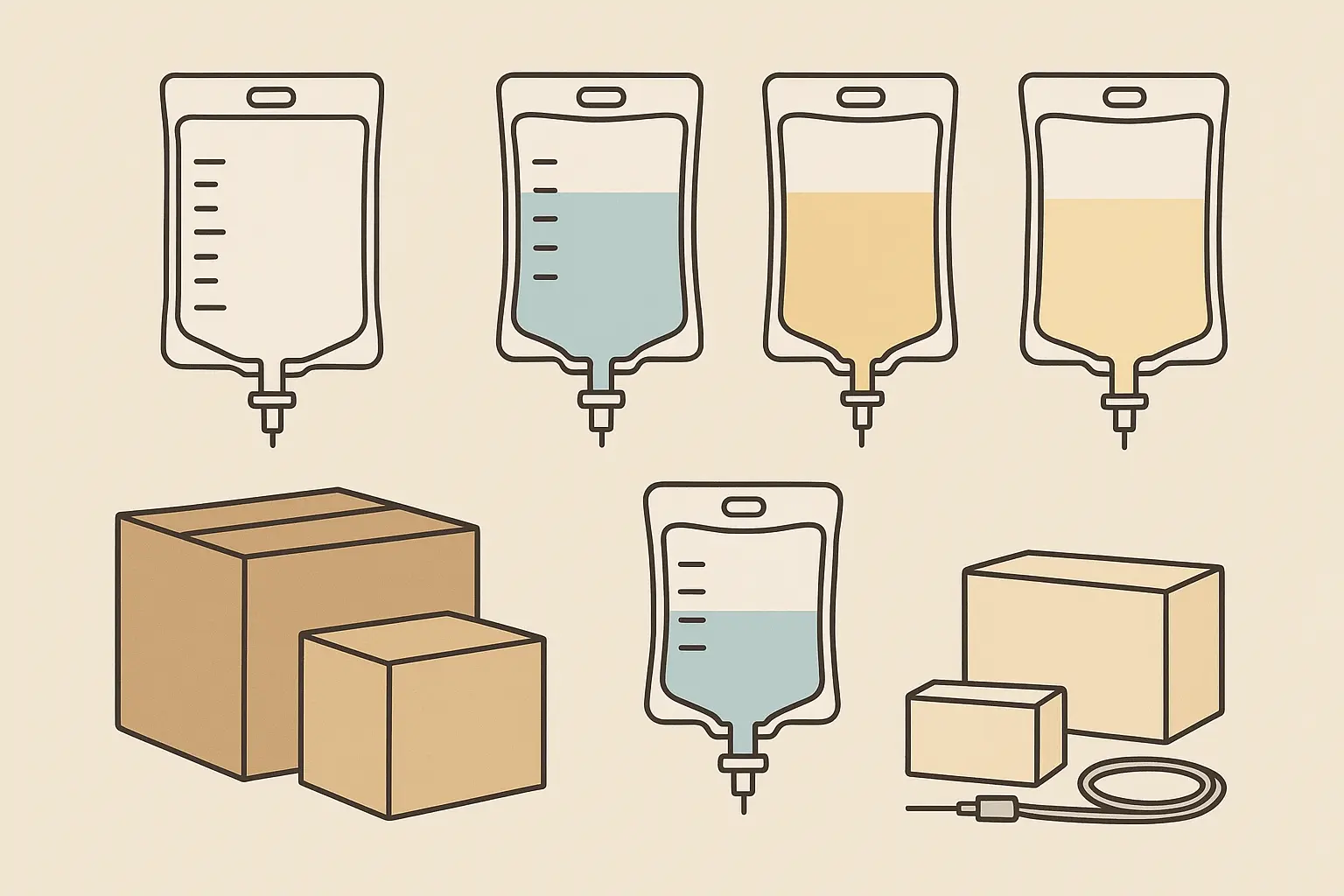
I’ll be honest – I went down this rabbit hole because I was frustrated with the healthcare system and curious about alternatives. What started as a simple question about where to buy IV fluids turned into months of research that completely changed how I think about medical supplies and healthcare access. The whole system is way more complicated than I expected, but I also found some genuinely useful alternatives that most people don’t know about.
I’m not a doctor, and you should definitely talk to one before trying any of this stuff. But if you’re curious about what’s actually out there beyond traditional healthcare, here’s what I learned.
Table of Contents
- What I Discovered About How IV Fluids Actually Get Distributed
- Alternatives That Surprised Me (And Actually Work)
- The Practical Stuff: Storage, Equipment, and Not Getting in Trouble
- How to Get Better Deals (Because This Stuff Is Expensive)
TL;DR
- Hospital systems control most of the good stuff, but there are legal workarounds through compounding pharmacies and even veterinary suppliers
- Quality varies way more than I expected – FDA approval doesn’t tell you everything you need to know
- Veterinary-grade solutions are often better than human ones and cost 30-70% less (I know how that sounds, but hear me out)
- Home use requires specific equipment and varies by state – some places don’t care, others have strict rules
- Buying in bulk or through groups can save you 40-80%, but you need storage space and a plan
- Specialized stuff like NAD+ and glutathione need custom mixing, which gets complicated fast
What I Discovered About How IV Fluids Actually Get Distributed
The IV fluid world is basically controlled by hospital systems through exclusive deals with big manufacturers. It’s frustrating, but there are ways around it if you know where to look. I spent way too much time trying to understand why something as basic as saline solution is so hard to get outside of a hospital.
Beyond the basic stuff, there’s a whole world of specialized therapeutic fluids that most people never hear about. The quality differences are huge, and FDA approval alone doesn’t tell you what you actually need to know.
Why Hospitals Have Everything Locked Down
Here’s the thing that really annoyed me when I figured it out: hospital networks have exclusive contracts with manufacturers like Baxter and B. Braun that basically shut everyone else out. They control about 85% of pharmaceutical-grade IV fluid distribution, and it’s not because they’re trying to help patients – they’re protecting their profit margins.
I learned this the hard way when Hurricane Helene knocked out Baxter’s North Carolina facility last year. Hospitals in Oregon are taking steps to conserve their supply of IV fluids because that one factory produces 60% of the nation’s IV solutions. One storm, and suddenly there’s a nationwide shortage. That’s how concentrated this whole system is.
The Confusing Legal Gray Area
This part took me forever to understand. You can legally buy certain IV solutions without a prescription, but the FDA’s classification system makes it really hard to know what’s what. Some products are medical devices, others are nutritional supplements. The rules aren’t exactly clear-cut, and I honestly think that’s intentional.
I called probably a dozen suppliers trying to figure out what I could legally buy, and I got different answers from everyone. The regulatory ambiguity actually creates opportunities for direct purchases, but you have to be careful about how you navigate it.
Why Compounding Pharmacies Became My Go-To
Compounding pharmacies turned out to be the best option I found. These are 503A and 503B facilities – basically specialty pharmacies that can make custom solutions. They’re growing fast because they solve real problems that the big hospital systems ignore.
The cool thing about compounding pharmacies is they can create personalized formulations while staying completely legal. They bypass all the traditional supply chain nonsense, and many of them actually know what they’re talking about when you call with questions.
Quality Is Way More Complicated Than I Thought
I assumed FDA approval meant everything was basically the same quality. I was wrong. There are quality markers that go way beyond basic regulatory compliance, and most suppliers won’t even discuss them unless you know to ask.
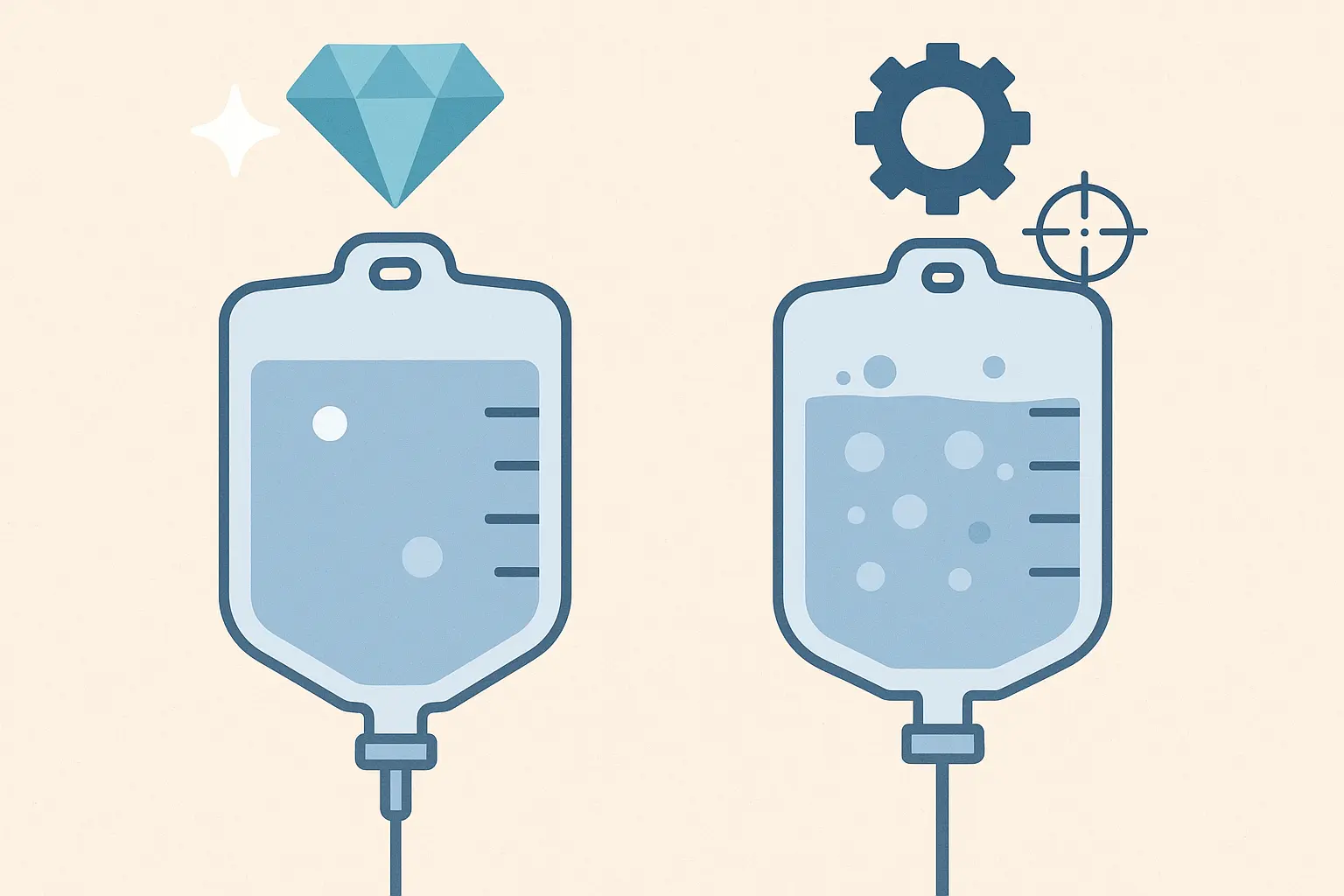
The Osmolarity Thing That Nobody Talks About
This one blew my mind. Most IV bags show osmolarity ranges, not exact values. But for real therapeutic effectiveness, you need precision within 5-10 mOsm/L tolerances. Think of it like salt water that’s too weak or too strong – the concentration really matters for how your body processes it.
Most suppliers won’t even discuss this level of detail, which tells you something about how much they actually know about their own products.
| Quality Factor | Standard Grade | Pharmaceutical Grade | Veterinary Grade |
|---|---|---|---|
| Osmolarity Precision | ±15-20 mOsm/L | ±5-10 mOsm/L | ±3-8 mOsm/L |
| Endotoxin Levels | <0.5 EU/mL | <0.25 EU/mL | <0.1 EU/mL |
| Heavy Metal Testing | Basic | Comprehensive | Ultra-sensitive |
| Container Material | Standard PVC | Multi-layer | Premium Non-PVC |
| Shelf Life | 18 months | 24 months | 30+ months |
The Container Problem I Never Saw Coming
Those standard PVC bags that most solutions come in? They’re actually leaching plasticizers into your IV solution over time. I had no idea this was even a thing until I started digging deeper into the research.
The newer multilayer bags cost 40-60% more, but they maintain sterility much longer and don’t have the contamination issues. It’s one of those things where paying more actually makes sense, but nobody tells you about it upfront.
Specialized Solutions That Actually Work
Beyond basic saline, there’s a whole world of IV solutions for specific therapeutic goals – NAD+ for cellular regeneration, glutathione for antioxidant support, custom vitamin blends based on your actual deficiency testing. Each one has its own sourcing and handling challenges.
NAD+ Solutions: Amazing But Finicky
NAD+ solutions are incredibly promising for cellular regeneration and energy, but they’re also incredibly finicky to work with. The potency degrades 15-20% per month under standard storage conditions. You absolutely need specialized handling, which means finding suppliers who actually understand what they’re dealing with (most don’t).
Glutathione: The “Master Antioxidant” Challenge
Glutathione is called the “master antioxidant,” and the research on it is pretty impressive. But getting it right is tricky – these formulations need specific pH buffering and light protection that standard IV manufacturing doesn’t provide. You need specialized compounding, or you’re basically wasting your money.
Custom Blends Based on Your Actual Needs
This is where things get really interesting. Some places can create custom vitamin and mineral IV solutions based on your actual deficiency testing, not just generic formulations. It’s more expensive, but the targeted approach often works better than one-size-fits-all solutions.
Alternatives That Surprised Me (And Actually Work)
I found some purchasing approaches that offer real cost savings and better customization options, but they require understanding different regulatory pathways and quality standards. Some of these options honestly surprised me with how good they are.
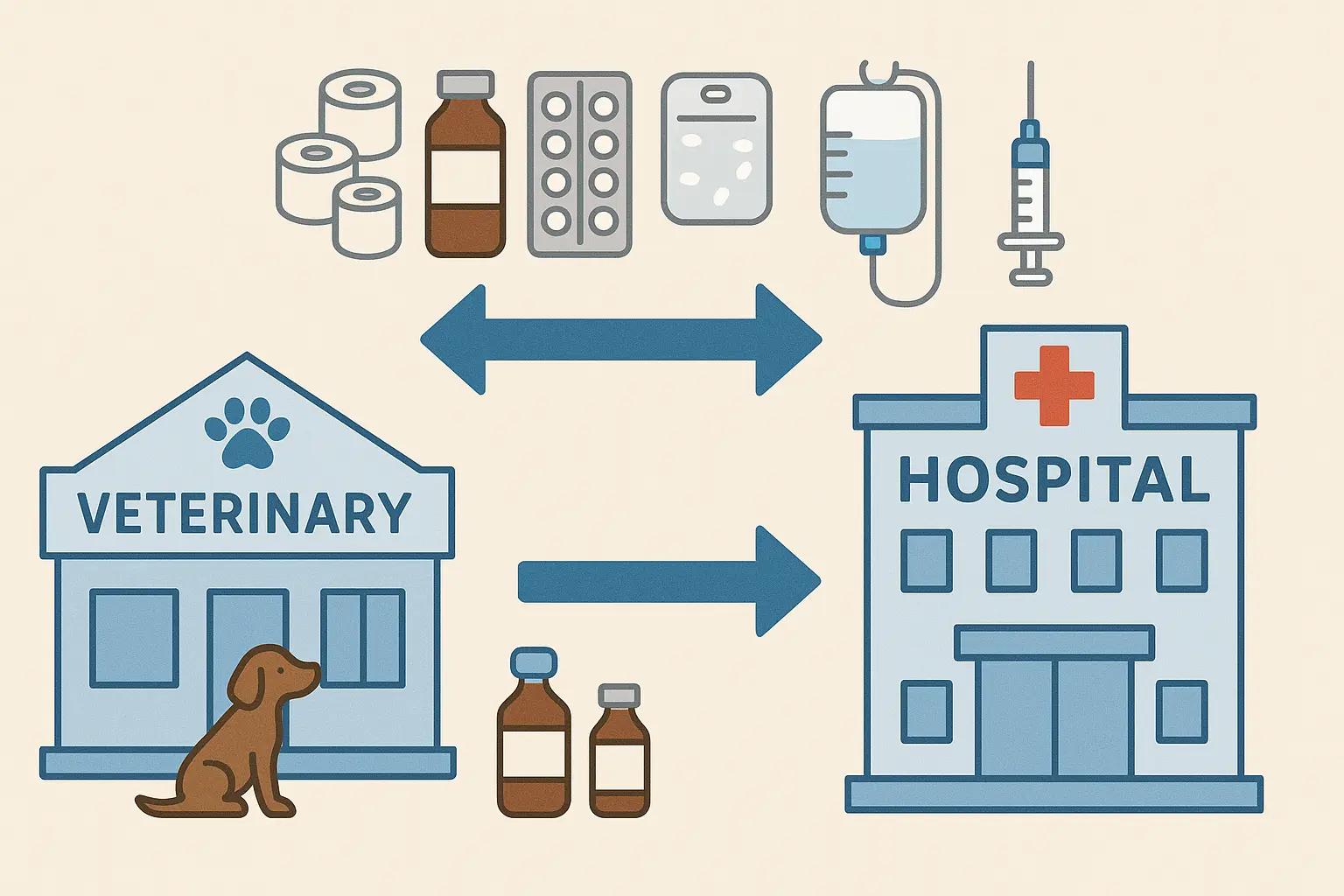
The Veterinary Option That Sounds Crazy But Isn’t
I know how this sounds, but veterinary-grade IV solutions are often better than human pharmaceutical ones. I was skeptical too until I saw the actual quality data.
Why Animal Medicine Is Sometimes Better
Here’s the thing – livestock represents massive financial investments, and owners demand the absolute best. Equine and bovine IV solutions often have higher purity standards than what we get for humans because there’s serious money on the line.
The quality control is often superior to human pharmaceuticals, which honestly makes me question our whole healthcare system. But that’s a rant for another day.
The Legal Loophole That Saves Money
Veterinary pharmaceuticals go through different FDA divisions with different oversight requirements. This creates legal pathways for accessing identical formulations at 30-70% lower costs. It’s basically regulatory arbitrage, and it’s completely legal.
I’ve compared lab reports between veterinary and human versions of the same solutions, and sometimes the vet versions are actually cleaner. The price difference is just insane.
International Sources That Beat US Options
I looked into global supply chains and found some quality alternatives that often exceed US standards. You have to navigate import regulations, but it’s doable.
European Standards That Put Us to Shame
European manufacturing standards, especially from German and Swiss facilities, often exceed US requirements for contamination and purity. I’ve seen test results that make US products look pretty mediocre in comparison.
The FDA recently had to approve international IV fluid imports to address domestic shortages. The Food and Drug Administration (FDA) approved the import of certain IV fluids from overseas because international suppliers can actually meet or exceed our quality standards. That should tell you something.
The Canadian Connection
Health Canada’s drug importation framework creates opportunities for legal access to identical formulations at significantly reduced costs. If you’re a qualifying medical practitioner, this parallel import program can save serious money while staying completely legal.
I know a naturopathic physician in Seattle who sources her clinic’s IV vitamin C through a Canadian supplier. Same 25g formulation costs $45 per bag versus $78 from US suppliers. That’s a 40% savings for identical products.
The Practical Stuff: Storage, Equipment, and Not Getting in Trouble
If you’re actually going to do this, you need to understand the practical side – equipment compatibility, storage requirements, and legal compliance. This is where most people mess up because they focus on buying the solutions but ignore everything else.
Setting Up for Home Use (If That’s What You’re Thinking)
Home administration requires specific equipment, training, and safety protocols. I spent way too much time learning about equipment compatibility the hard way.

Equipment Compatibility Is Where People Mess Up
Your IV administration sets, pumps, and monitoring equipment have to match specific fluid viscosities and flow rates. Compatibility issues cause 20-30% of home administration failures, and that’s not a risk you want to take.
I learned this lesson when I bought equipment that looked compatible but wasn’t rated for the specific solutions I wanted to use. Had to return everything and start over with proper research.
Equipment Compatibility Checklist I Wish I’d Had:
- Verify IV administration set matches fluid viscosity
- Confirm pump compatibility with chosen tubing
- Test flow rate accuracy with actual solutions
- Check needle gauge compatibility with solution type
- Ensure monitoring equipment calibration
- Verify backup power source for pumps
- Confirm emergency stop procedures
- Test all connections for leaks before use
Training and Legal Requirements Nobody Talks About
There’s no federal certification for self-IV administration, but liability and medical oversight requirements vary wildly by state. Some states don’t care, others have strict requirements. You absolutely need to know what applies where you live before you start.
| State Category | Medical Oversight Required | Insurance Requirements | Training Certification | Legal Restrictions |
|---|---|---|---|---|
| Permissive States | Recommendation only | Personal choice | None required | Minimal |
| Moderate Oversight | Licensed practitioner | Liability coverage | Basic first aid | Some limitations |
| Strict Regulation | Direct supervision | Professional coverage | Medical training | Significant restrictions |
| Prohibited | N/A | N/A | N/A | Complete ban |
Storage That Actually Preserves What You Bought
I wasted money on my first purchases because I didn’t understand storage requirements. Temperature and light exposure can destroy expensive solutions faster than you’d think.
Temperature Cycling Will Kill Your Investment
Those repeated temperature fluctuations during shipping and storage can reduce solution stability by 15-25% even when staying within “acceptable” ranges. Most suppliers won’t mention this, but it’s killing the effectiveness of what you’re buying.
I started tracking temperature during shipping and was shocked at how much cycling happens even with “temperature controlled” delivery.

Light Exposure: The Thing I Learned About Too Late
UV and visible light exposure affects different IV solutions at different rates. Some formulations lose 50% of their potency within 72 hours of light exposure. I found this out after storing expensive NAD+ solutions in a clear container near a window for three weeks.
A guy I know in Austin made the same mistake with $500 worth of solutions. Independent testing showed they’d lost 65% potency due to light degradation. Now he stores everything in amber containers inside a temperature-controlled, dark cabinet. Lesson learned, but expensive lesson.
How to Get Better Deals (Because This Stuff Is Expensive)
Strategic purchasing can reduce costs by 40-80% if you understand pricing structures and volume benefits. I learned most of this through trial and error, but there are definitely patterns that work.
Volume Purchasing That Makes Sense
Bulk purchasing requires understanding expiration dating, storage capacity, and realistic usage forecasting. I got excited about bulk discounts before thinking through the practical side.

Getting Hospital-Level Pricing Without the Hospital
Group purchasing organizations aren’t just for hospitals. Small clinics and individual practitioners can access hospital-level pricing through GPO membership programs. The catch? They don’t advertise these programs to smaller buyers. You have to know they exist and actively seek them out.
I spent weeks calling different GPOs before finding ones that would work with individuals. It’s worth the effort though – the pricing difference is substantial.
Subscription Models That Actually Save Money
Monthly subscription services for IV fluids can provide 25-40% cost savings compared to buying per unit. Plus, you get storage management and expiration tracking included. The predictable costs make budgeting much easier if you’re a regular user.
Volume Purchasing Reality Check:
- Monthly usage estimate: Be honest about what you’ll actually use
- Storage capacity: You need more space than you think
- Budget allocation: Factor in equipment and storage costs
- Expiration dates: Solutions expire faster than you expect
- Backup plans: What happens if you can’t use everything you bought?
Services Worth Paying Extra For
Some suppliers offer comprehensive support that justifies premium pricing through better outcomes and reduced headaches. I learned to value these after trying to go cheap initially.
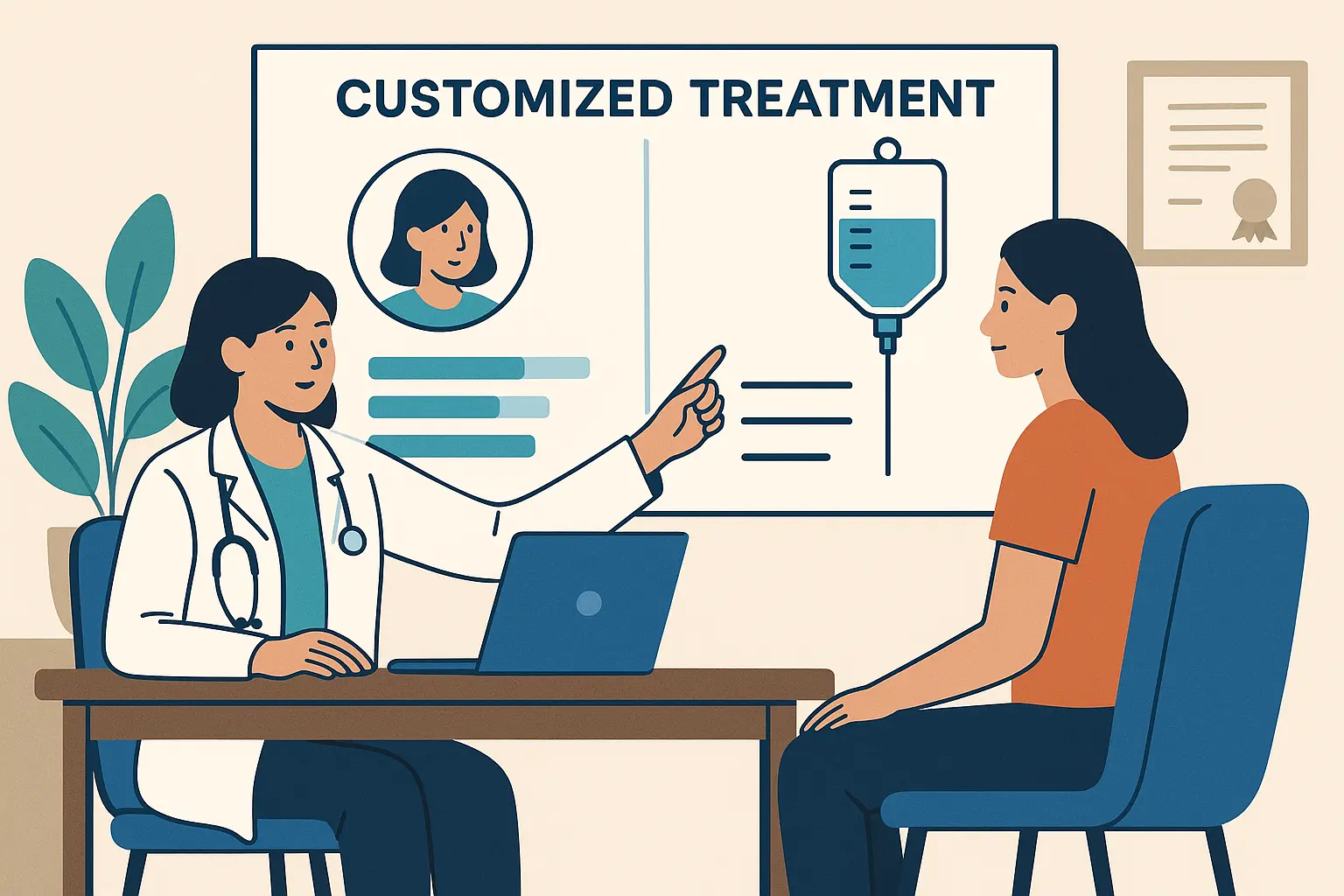
Custom Formulations Based on Real Testing
Custom compounding based on your actual biomarker testing and monitoring data costs more upfront, but the targeted approach often works better than generic formulations. You’re getting exactly what your body needs instead of guessing.
Monitoring Services That Keep You Safe
Telemedicine integration with IV therapy provides real-time monitoring and dosage adjustments. It improves safety and effectiveness while reducing the need for in-person medical visits. The peace of mind is worth the extra cost, especially when you’re starting out.

Look, after all this research, I’ll be honest – the complexity of sourcing, verifying quality, and safely administering IV fluids is pretty overwhelming. If you’re mainly interested in the therapeutic benefits like combating fatigue, enhancing mood, and supporting cellular health, there might be simpler approaches.
Companies like Enov.one focus on NAD+, Glutathione, and B12/Methylcobalamin injections that address the same therapeutic goals without all the procurement headaches. Their 503A FDA-regulated pharmacy network eliminates the quality concerns and sourcing challenges, plus they provide the telemedicine monitoring that makes self-administration much safer.
The flat pricing and integrated support handle a lot of the complexity I’ve been describing. Sometimes the simpler path makes more sense, especially when you factor in all the time, research, and potential risks of going the DIY route.
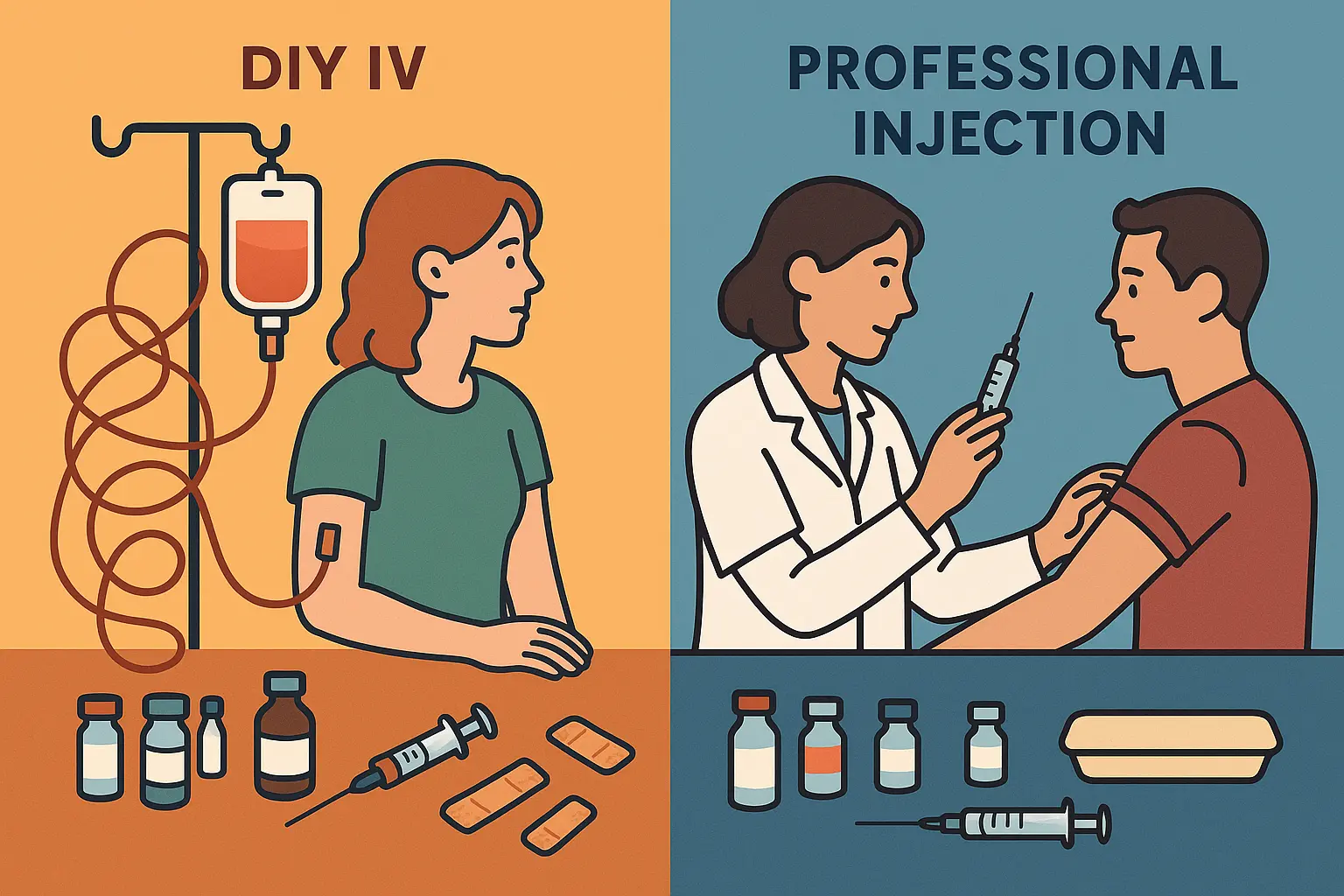
What I Actually Think After All This Research
The IV fluid marketplace is way more complex than I expected when I started this journey. Hospital monopolies, regulatory gray areas, and quality variations that significantly impact what you’re actually getting – it’s a lot to navigate.
I found legitimate alternatives through veterinary suppliers, international sources, and compounding pharmacies, but each approach requires careful attention to legal requirements and quality verification. You can’t just order something online and assume it’s going to work the way you want.
The cost savings can be substantial – I’ve seen 40-80% reductions in many cases – but only when you understand the full picture of what you’re buying, how to store it properly, and how to use it safely. There’s a learning curve, and mistakes can be expensive (or dangerous).
For most people seeking the therapeutic benefits of IV treatments, the complexity of independent sourcing, quality verification, and safe administration might outweigh the potential cost savings. The time investment alone is significant, and that’s before you factor in the storage requirements, equipment needs, and ongoing monitoring.
I’m not trying to discourage anyone from exploring alternatives to traditional healthcare – that’s why I did all this research in the first place. But I am being honest about what’s actually involved. This isn’t as simple as finding a supplier and placing an order. There’s real complexity here, and ignoring it can lead to problems.
The healthcare system has its issues, and I get the frustration that drives people to look for alternatives. But going solo has its own set of challenges and risks that you need to understand before jumping in. Maybe the traditional system isn’t perfect, but at least someone else is handling the quality control, storage, legal compliance, and safety monitoring.
Whatever you decide, do your homework, talk to medical professionals who actually understand this stuff, and don’t let cost savings override safety considerations. The money you save isn’t worth much if you end up with contaminated solutions, improper dosing, or legal problems.
